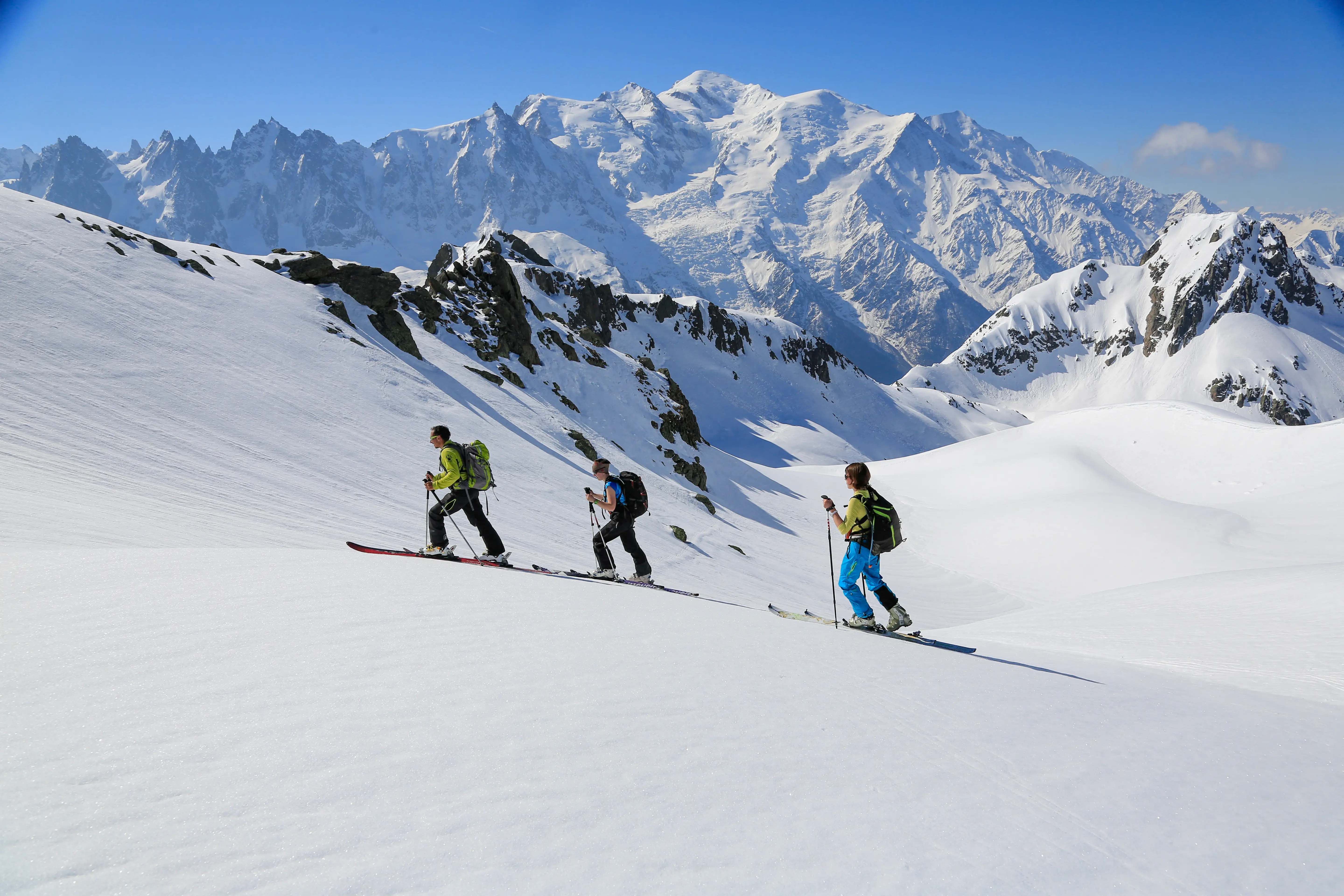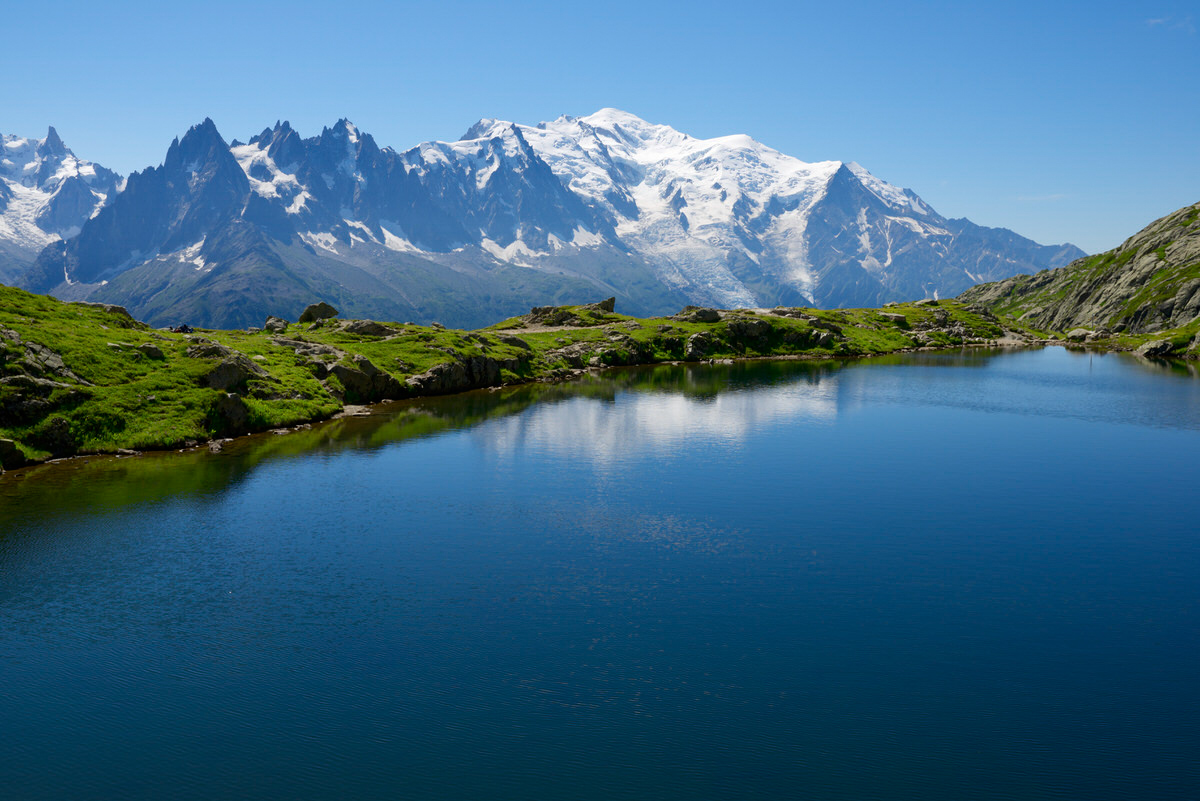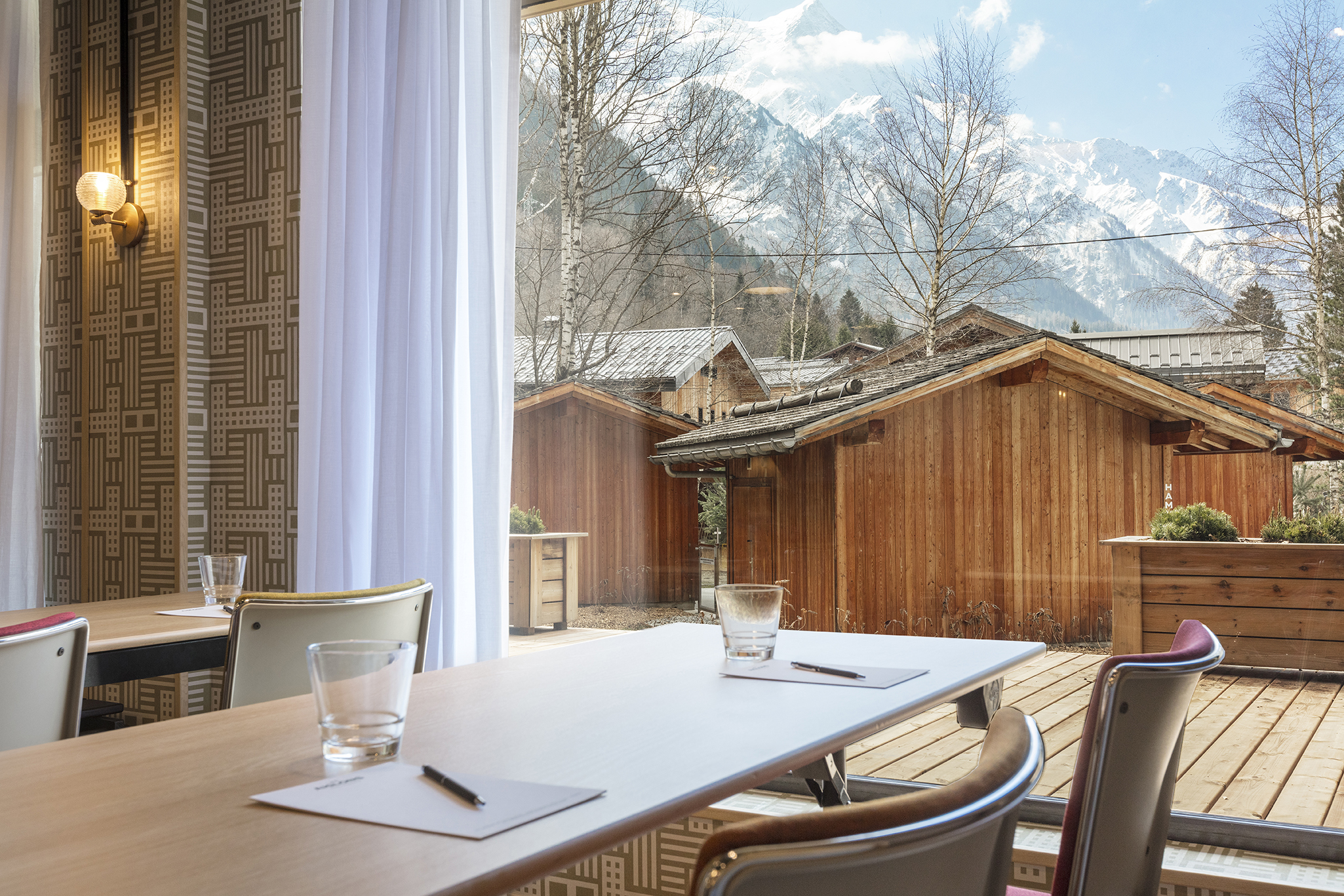Ascending Mont-Blanc: your next challenge?
Chamonix is the Capital of mountaineering, dominated by the majestic Mont-Blanc which culminates at 4810 meters. Since the conquest of the highest mountain in Europe by Jacques Balmat and Michel Gabriel Paccard in 1786, the peaks of the Mont-Blanc Massif are undoubtedly the most sought-after in the world. In fact, theAscension of Mont-Blanc is a mountaineering business! In this guide, we explain everything you need to know to prepare to climb Mont-Blanc with confidence.
What are the routes to climb Mont-Blanc?
The normal route (via the Goûter refuge) — The classic itinerary
It is the most popular route, ideal for a first ascent of Mont-Blanc, although physical with about 3,800 meters of altitude difference. In terms of difficulty, it is a long and demanding itinerary, which requires excellent physical condition and prior acclimatization:
● Day 1 - ascent to the Goûter refuge: the ascent of Mont-Blanc starts from Saint-Gervais or Les Houches, taking the Mont-Blanc Tramway to the Eagle's Nest (2,372 m). From there, we start the climb to the Tête Rousse refuge (3,167 m), then we cross the Goûter corridor, a section exposed to falling rocks. Finally, we reach the Goûter refuge (3835 m), where we spend the night to acclimatize.
● Day 2 - the final ascent to the summit of Mont-Blanc: departure in the middle of the night to avoid afternoon storms. We progress on the Arête des Bosses, a demanding aerial passage, before reaching the Abri Vallot (4,362 m), an emergency shelter in case of need. The last portion is intense but unforgettable: a few extra efforts and it's time to reach the summit of Mont-Blanc at sunrise! ✨
The Trois Monts route (via the Aiguille du Midi) — A more technical itinerary
This more challenging itinerary starts from the Aiguille du Midi (3,842 m) and crosses three peaks before reaching the summit of Mont-Blanc. It is a more technical route than the normal route, with steep slopes and exposure to crevasses and seracs:
● Day 1 - ascent to the Cosmices' refuge (3,613 m): we take the Aiguille du Midi cable car, then a short walk to reach the Cosmices' refuge, the starting point of the ascent.
● Day 2 - crossing the Trois Monts: the ascent starts early with the ascent of Mont-Blanc du Tacul (4,248 m), then Mont Maudit (4,465 m), a technical section requiring the use of technical equipment (crampons, ice ax, harness). A final climb allows you to climb the last meters of altitude difference to reach the summit of Mont-Blanc.
And the descent of Mont-Blanc, how is it going?
While reaching the summit of Mont-Blanc is a victory in itself, the descent should not be underestimated. After hours of effort to reach an altitude of 4,807 meters, the body is tired, oxygen is more present, but vigilance is still required. The descent requires intelligent energy management and maximum concentration to avoid accidents:
● An early start to avoid dangers: the descent usually starts shortly after reaching the summit, to avoid worsening weather conditions and increasing the risk of avalanches or serac falls. The more the day progresses, the more unstable the snow becomes, especially on the Trois Monts route (Mont-Blanc du Tacul and Mont Maudit), where cracks can open up under the effect of the sun.
● A different but just as demanding muscular effort: going down requires muscles other than going up: the quadriceps and the joints are particularly put to the test. After hours of effort uphill, lack of energy and fatigue can slow the pace and increase the risk of slips or careless mistakes.
● A strategic passage through the refuges: most mountaineers take an essential break at the Goûter refuge (normal route) or at the Cosmices' refuge (Trois Monts route). This rest allows you to rehydrate, regain some strength and leave with more lucidity. Some choose to spend an extra night there to avoid a too sudden descent in a single day.
● Back to the ski lifts and to the cow floor: once the meters of altitude have been negotiated, the end of the descent is done via the Mont-Blanc Tramway (normal route) or the Aiguille du Midi cable car (Voie des Trois Monts). After so much effort, returning to the valley is often a moment of intense emotion and satisfaction.
Can everyone climb Mont Blanc?
Climbing the roof of Europe (culminating at an altitude of 4,807 meters) is a demanding adventure that requires excellent physical condition, good acclimatization to altitude and adapted equipment. The ascent of Mont-Blanc cannot be improvised and is generally done in two days, accompanied by a mountain guide.
Although the normal route through the Goûter refuge does not have very technical climbing passages, it still requires a Good control of crampon walking, the use of the ice ax and the roped progression on the glacier. Those who have never practiced mountaineering must follow a training course or an introductory course before trying to climb!
Whichever path is chosen, theacclimatization to altitude is essential to avoid acute mountain sickness (headache, nausea, shortness of breath). One High mountain preparation course or nights at altitude before the ascent are strongly recommended. In addition to fitness, you need a good weather window: strong winds and storms can make climbing the Mount too dangerous.
Here is the list of essential equipment for climbing Mont-Blanc:
● cleats and ice ax;
● adapted mountaineering shoes;
● harness and helmet;
● thermal and windproof clothing;
● gloves, glacier goggles and sunscreen;
● energy food and water.
There is no official age limit, but children under 16 and people with cardiovascular or respiratory problems should avoid such an expedition. Medical advice is recommended for anyone who has doubts about their ability to withstand the effort and the altitude.
How much does it cost to climb Mont-Blanc?
Set out to attack the Roof of Europe is an unforgettable adventure, but what is the Price of an ascent of Mont-Blanc ? The cost may vary from 1,500 to 3,500€ per person, depending on the formula chosen.
Here are the main expenses to expect:
● Supervision by a guide: the ascent of Mont-Blanc is a technical race requiring the support of an experienced guide. Count between €1,000 and €2,500, depending on the duration of the expedition and the number of participants.
● Shelter accommodation: refuges such as Le Goûter or Les Cosmicques are essential stops. The price of a night with half board is around €70 to €100 per person.
● Materials and equipment: if you do not already have the necessary equipment (crampons, ice ax, harnesses, adapted clothing, etc.), renting can cost between €100 and €300 for the entire stay.
● Ski lifts: to facilitate the ascent, access to the Mont-Blanc Tramway or the Aiguille du Midi cable car is often included in guided packages. Expect around €40 to €80 round trip.
● Preparation and acclimatization course: to maximize your chances of success and avoid mountain sickness, it is advisable to follow an acclimatization and introduction to mountaineering course. These courses cost between 500 and 1,000€ depending on their duration and the program.
Good to know: To get a slot in the shelters and with the guides, it is better to book several months in advance, especially in high season (June-September)! The ascent of Mont-Blanc represents an investment, but it is also a unique and unforgettable experience.
So, ready for the challenge? Les Aiglons takes care of everything for you on+33 (0) 4 50 55 90 93.




